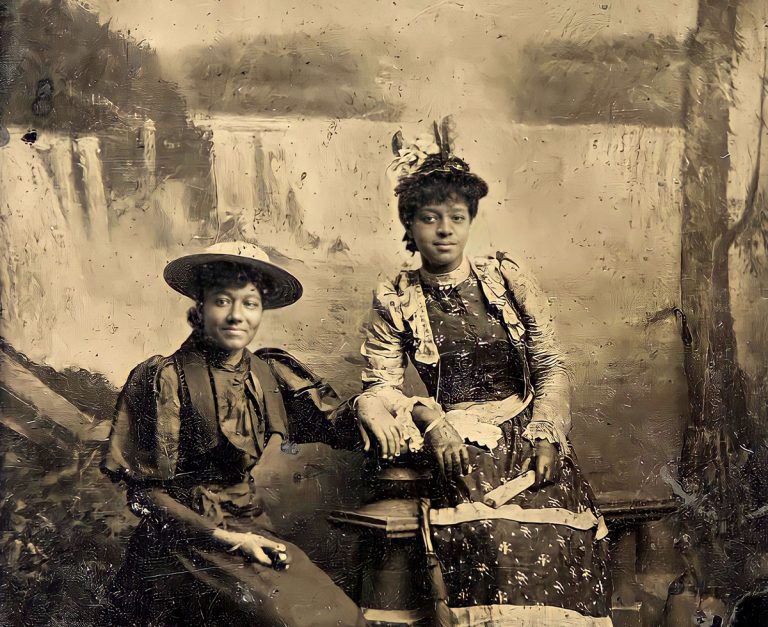Pictured Above: Two unidentified black women with Niagara Falls in the background. Courtesy of Brock University Special Collections & Archives
February is Black History Month, a date recognized as an annual month of remembrance of important people and events in African-American history. Canadians and Americans celebrate it this month, and the United Kingdom also recognizes Black History Month in October.
Niagara Falls is more than just the city to go to in order to witness the majestic Falls, it also played an active role for African-Americans throughout history.
The Underground Railroad
Between 1840 and 1860, enslaved Africans followed the “Underground Railroad” to find freedom in Canada. It was not an actual railroad, but rather a secret network of routes and safe houses that helped people escape slavery and reach Canada, especially after the US passed the “Fugitive Slave Act” in 1850. This allowed slave hunters to pursue and capture enslaved people in places where they would legally be free. Approximately 30,000 slaves were able to escape along the Underground Railroad, and Niagara Falls was well-recognized as being a settling point for many people who escaped slavery in the United States.
Harriet Tubman
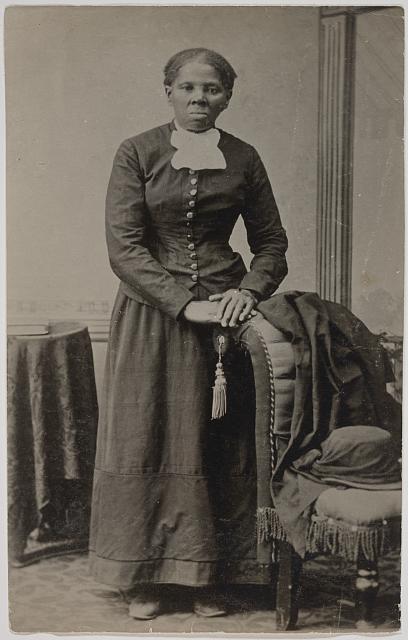
One of the most influential and empowering people to celebrate during Black History Month in Niagara Falls, is also the woman who played a huge hand in the Underground Railroad and became a heroine to many black people.
Harriet Tubman was born into a plantation in Maryland right into slavery. She was tormented with much cruelty as a field-hand. At age 13 she was struck in the head by a weight hurled by an overseer that would cause seizures for the rest of her life. After the death of her master in 1849, she was petrified of being sold to the Deep South and escaped without her husband to Philadelphia in the north. She began work as a cook in hotels and clubs to finance excursions to liberate other slaves into the Underground Railroad.
She returned in 1850 to rescue her sister Mary Ann and her two children. The Fugitive Slave Act came into effect in 1850, so now Harriet could no longer find complete refuge in the northern states, so that is when she began to bring them across the border into Niagara Falls, Canada. From there, they traveled to nearby St. Catharines, where they were aided by the Reverend Hiram Wilson, an abolitionist and the leader of the local refugee community.
In 1851 Tubman moved to St. Catharines, which would be the centre of her anti-slavery activities for the next seven years.
Due to Harriet Tubman’s courageous actions, St. Catharines quickly grew to 123 black families listed on the assessment rolls in 1855. Between 1852 and 1857, Tubman made 11 trips into the United States to rescue fugitives. What made her actions even more heroic was the $40,000 reward posted by a group of slave-owners for her capture — dead or alive. No one rivaled Tubman in the number of trips and the number of slaves liberated into the Underground Railroad.
Nathaniel Dett Memorial Chapel, 5674 Peer St., Niagara Falls
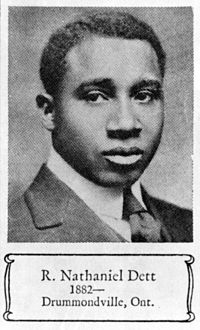
The church was built in 1836 and in 1856, it was moved to Peer Street. The move was funded by a gentleman named Burr Plato, a fugitive from the US who prevailed over racist attitudes and became the first elected Black man in local government from 1886 to 1905. The Peer Street property was donated by Oliver Parnell, who had escaped slavery from Berlin, Maryland by swimming the Niagara River to freedom. Once in Canada, Pernell made his way to the village of Drummondville, part of present-day Niagara Falls, and settled there. During this period, there were many refugee slaves living in Drummondville along Peer, Stanley, Ross, Grey and Robinson Streets.
The building was renamed in 1983 after Nathaniel Dett, who was born in Niagara Falls in 1882. Dett was a world-renowned musician and composer. This building is the third oldest church in Niagara Falls.
One of Nathaniel Dett’s most played pieces is called “In the Bottoms”. He wrote this piano piece for the students he taught musically in 1913. It is being performed by Leon Bates. This is a portion of the second movement called “His Song”.
Niagara Black History Venues & Events
Niagara’s collection of displays and monuments honouring Black Canadian heritage allows visitors to learn about Canada’s stories of independence and bravery. Learn about Niagara’s part in the renowned Underground Railroad as you travel along the magnificent Niagara River Parkway from Fort Erie to Niagara Falls and Niagara-on-the-Lake. See the printing press that printed Canada’s 1793 Act Against Slavery and stand where Harriet Tubman first entered into Canada in 1851.
Nathanial Dett Memorial Chapel of the British Methodist Episcopal Church
In 1836, the “British Methodist Episcopal Church” was built. The Nathaniel Dett Memorial Chapel is a National Historic Site that is part of the Freedom Trail’s Underground Railroad heritage places of interest.
Harriet Tubman Tribute
Harriet Tubman’s initial crossing into Canada in 1856 was commemorated by an explanatory plaque placed by the Niagara Parks Commission in June 2017. She crossed the Niagara Parkway, north of the falls, on a suspension bridge near the current Whirlpool Bridge Plaza. At the White Water Walk and Whirlpool Bridge’s entry, look for a sequence of plaques.
https://www.cliftonhill.com/attractions/niagara-parks/white-water-walk
Niagara Falls History Museum
Throughout the year, the Niagara Falls History Museum hosts black history exhibits.
https://www.cliftonhill.com/attractions/niagara-falls-history-museum
The Louis Roy Press and the 1793 Act Against Slavery (Queenston)
Canada’s oldest wooden printing press, which printed the 1793 Act Against Slavery. Mackenzie Printery & Museum of Newspapers (Queenston)
https://www.cliftonhill.com/attractions/niagara-parks/mackenzie-printery
Niagara Falls Underground Railroad Heritage Center (Niagara Falls, New York)
825 Depot Ave W, Niagara Falls, NY 14305, United States
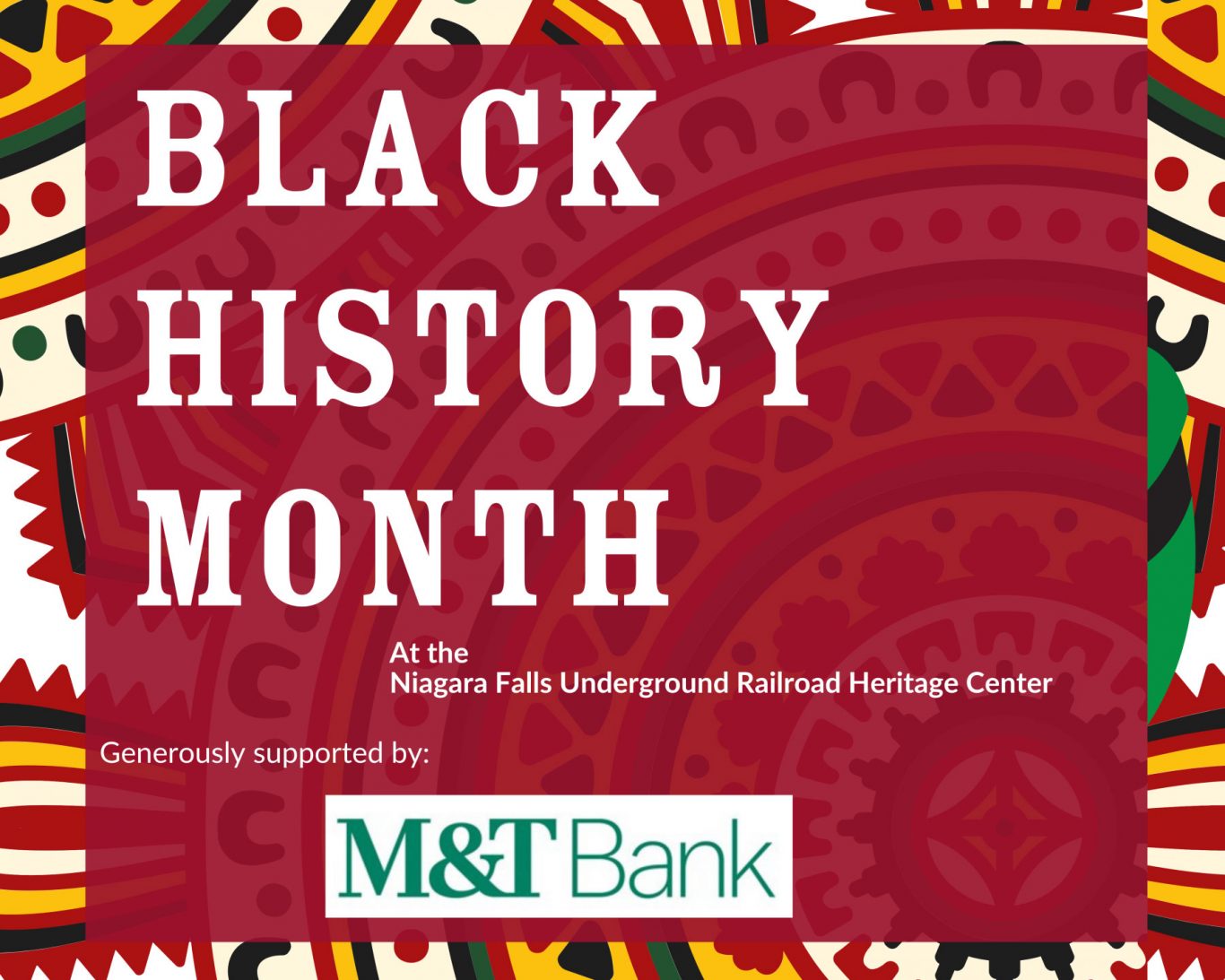
The Heritage Center’s aim is to tell the true story of Niagara Falls’ Underground Railroad freedom seekers and abolitionists, inspiring visitors to realize modern-day injustices stemming from slavery and take steps toward a more fair society.
The Niagara Falls Underground Railroad Heritage Center is open from 10 a.m. – 5 p.m. on Tuesday – Sunday.
Events: https://www.niagarafallsundergroundrailroad.org/black-history-month/
Tours: https://www.niagarafallsundergroundrailroad.org/tours-2/
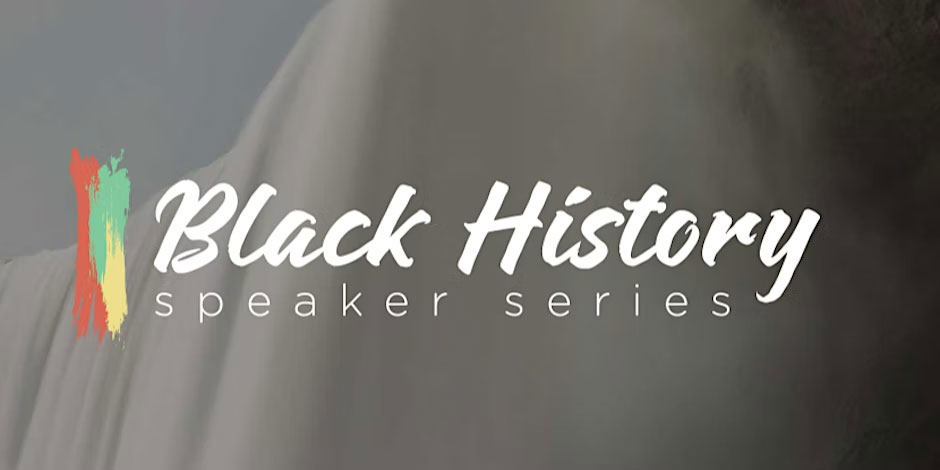
Speaker Series on Black History by the Niagara Parks Commission
With this multi-part online speaker series, learn about different viewpoints on Black history and culture in Canada.
The speaker series has an exceptional lineup of speakers, beginning on January 29 with Lezlie Harper, an established Black history educational group tours professional located in Niagara, and concluding on February 26 with Saladin Allah, a recognized award-winning multi-media activist. Kevin Cottrell, the originator of the current National Network to Freedom Initiative, will conclude the series on March 26.
Tickets grant access to the speaker series, along with coffee and tea at the event.
Tickets are $15 per event, or gain access to the entire series for $35. All sessions begin at 2:00 p.m.
- January 29: Lezlie Harper, Celebrating Black History in Niagara
- Lezlie Harper, a Black history educational group tour specialist, will begin off the series on January 29 with an examination of Black History in Niagara.
- February 26: Saladin Allah, Present-Day Freedom Seekers and The Power of our Stories
- Saladin Allah, a multi-media activist, will lecture about current day freedom seekers and the impact of their tales on February 26.
- March 26: Kevin Cottrell, Interpreting The Underground Railroad in the age of Heritage Tourism and the built environment in the Niagara Region
- The series finishes on March 26 with Kevin Cottrell, the current National Network of Freedom Initiative’s founder. He’ll speak on the Niagara Region’s heritage tourism and the Underground Railroad.
More information and tickets are available at niagaraparks.com/black-history. Tickets are $15 per event, with a $35 package that includes admission to all three events. All sessions will begin at 2 p.m. at the Laura Secord Homestead, 29 Queenston Street, Queenston, Ontario.
Lezlie Harper: Celebrating Black History in Niagara
January 29, 2023
This session will look at the experiences of Black families who come to Canada, as well as the experiences of families who come to the Niagara Region and Canada.
Saladin Allah: Present-Day Freedom Seekers and The Power of our Stories
February 26, 2023
This workshop will investigate Present Day Freedom Seekers and the Power of Our Stories in an illuminating presentation about the significance of our local legacy and the need of preserving the stories of ordinary people doing amazing things. Saladin discusses the importance of everyday people finding a sense of agency in their legacy as modern-day freedom seekers by highlighting the Niagara Falls Underground Railroad Heritage Center and sharing his personal story as a descendant of famed underground railroad freedom seeker Josiah Henson.
Kevin Cottrell: Interpreting The Underground Railroad in the age of Heritage Tourism and the built environment in the Niagara Region
March 26, 2023
Cottrell walks participants through the history of Black history stories along the Niagara River in this session.














